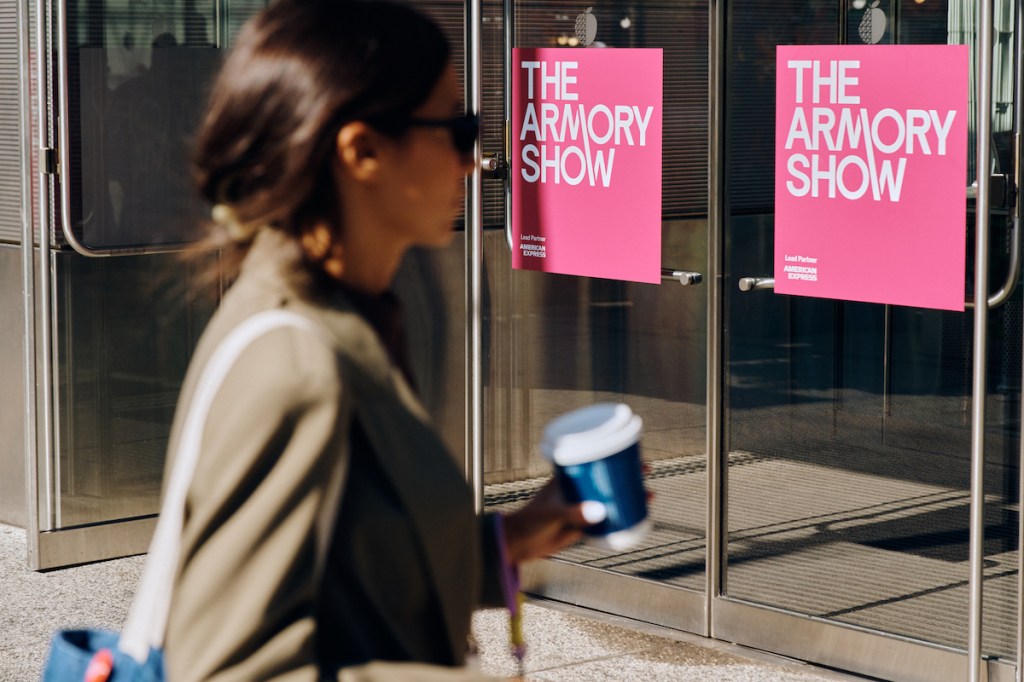To receive Morning Links in your inbox every weekday, sign up for our Breakfast with ARTnews newsletter.
The Headlines
SEOUL GAZING. Now in its fourth year, Frieze Seoul is quickly establishing itself as a major force in the region’s art scene. This year’s edition runs from September 3 to 6, once again coinciding with South Korea’s premier art fair, Kiaf. The fair’s director Patrick Lee spoke to Moncole about his favorite galleries taking part this year, what makes Frieze Seoul special, the challenges facing Asian galleries, and, of course, his go-to spot for Korean barbecue in Seoul. “Frieze Seoul has become a cornerstone of a vibrant cultural week in the city, fostering collaboration between local institutions in ways that we hadn’t seen before. Late-night gallery openings across Euljiro, Hannam, Cheongdam and Samcheong allow visitors to experience Seoul’s rich cultural ecosystem, from museums and galleries to non-profits,” he said. “What makes Seoul truly special is the depth and diversity of its arts institutions and the way that the city naturally connects art, design, food, music, film and fashion. Frieze Seoul has established itself not only as an important cultural event in the city but across Asia, and we’re grateful to the local community for welcoming the fair with such pride.”
Related Articles

COMPLICATING STEREOTYPES. Long seen as a New York–centric event, The Armory Show is expanding its horizons this year with a spotlight on the American South—one of the fastest-growing, most racially and culturally diverse regions in the US,The Art Newspaper reports. Running from September 4 to 7, the fair will devote much of its “Focus” section to Southern artists and galleries. Organizers hope the initiative will challenge common stereotypes and offer a more nuanced view of the South. “I was thinking about how we can amplify the Americas—and about the South as a nexus for so many diasporas,” says Kyla McMillan, who was appointed director of The Armory Show in July 2024. This year’s edition marks the first fully under her leadership following the fair’s acquisition by Frieze. “The ‘Focus’ section felt like a really interesting and vital way to enter that conversation.” Curated by Jessica Bell Brown, executive director of the Institute for Contemporary Art at Virginia Commonwealth University in Richmond, “Focus” brings a fresh perspective to the fair. “When we think of the American South, we’re primed to consider it through a historical or social lens,” McMillan says. “It’s exciting to bring that into a commercial context and give these artists and galleries a bigger stage.”
The Digest
The UK’s first dedicated space for Somali heritage has built its collection from 15 years of donations. Many of the donated artifacts were “just sitting around in suitcases in people’s homes.” [Guardian]
Artsy highlights 11 “unmissable” fall shows featuring a breadth of movements and styles from Symbolism to Nigerian modernism. [Artsy]
Delhi’s Raj-era Central Secretariat will be transformed into the “world’s largest museum” boasting a vast display showcasing 5,000 years of heritage as Narendra Modi purges “colonial symbolism.” [The Times]
The Clark Art Institute in Williamstown has announced that its director Olivier Meslay will step down in July 2026. [Boston Globe]
Digital art takes center stage in thirteen publications on the subject, as “artists increasingly blend disciplines, challenge norms, and utilize emerging technologies to express complex ideas.” [Forbes]
The Kicker
AI TECH BROS DEABTE HUMANITY. When Japanese British aritst Hiromi Ozaki created six AI-generated “tech bros” to argue about the future of humanity, she didn’t expect reality to catch up quite so quickly—or so closely, CNN reports. “It’s not really about votes anymore—it’s about who controls the algorithms,” declares one avatar, a square-jawed, blond man. “Where does free will even factor in?” asks another, echoing the philosophies of billionaire figures like Elon Musk and Peter Thiel, whose ideas helped shape these fictional personas. The avatars, featured on large video panels, are voiced and facially modeled after Ozaki herself—but reimagined as white men. Designed to embody the “stereotypical tech bro,” they coolly debate topics ranging from the decline of democracy to the future of labor, with a chilling detachment. “I wanted them to feel unsettling,” said the artist, who works under the name Sputniko!, in a video interview. The installation debuted at her solo exhibition in Tokyo last year—coincidentally just days before the US presidential election and the creation of the Musk-led Department of Government Efficiency (DOGE). The work will next appear at the Ars Electronica Festival in Austria, followed by a three-month exhibition at The Art Gallery at Brooklyn College in New York. While the project originally stemmed from Ozaki’s skepticism about technology and AI, she says it feels even more urgent now. As she sees it, tech elites are increasingly shaping the public conversation—and, perhaps, the future itself. “They have so much power, so much money,” she says. “And they’re really talking about humanity like they have total control.”

